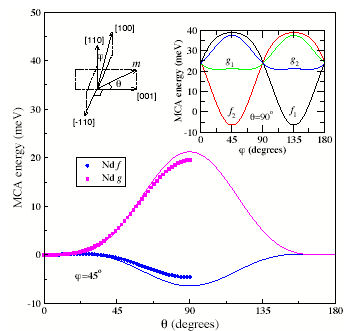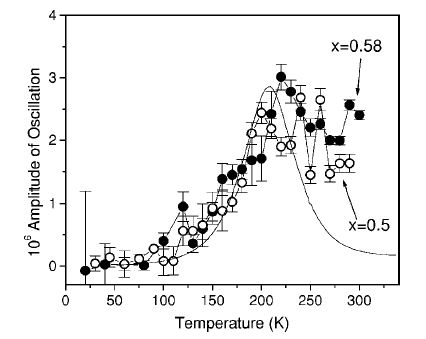| Highlights |
|
Atomic origin of magneto-crystalline anisotropy in NdFe14B D. Haskel, J. Lang, Z. Islam, A. Cady, G. Srajer, M. van Veenendaal, and Paul Canfield (9.2005) Phys. Rev. Lett. 95 , 217207 (2005) Press release APS Highlight The magnetic moment reversal at each of the two inequivalent Nd sites in a single crystal of ferromagnetic Nd2Fe14B is probed by dichroic resonant diffraction of circularly polarized x rays. The results, supported by theory, show that the c-axis intrinsic magnetic stability of this superior permanent magnetic material arises predominately at one of the Nd sites (g). The other site (f ) undermines magnetic stability by favoring a magnetic moment orien tation in the basal plane. |
|
Coherent optical and acoustic phonon generation correlated with the charge-ordering phase transition in La1-xCaxO3CaxO3 D. Lim, V. K. Thorsmølle, R. D. Averitt, Q. X. Jia, K. H. Ahn, M. J. Graf, S. A. Trugman, and A. J. Taylor (7.2005) Phys Rev. B, 71, 134403 ( 2005 ). We have observed coherent optical and acoustic phonon generation, which are strongly coupled to the charge-ordering sCOd transition in La1−xCaxMnO3 sx=0.5, 0.58d using femtosecond optical pump-probe spectroscopy. Coherent optical phonons, observed at low temperatures, disappear above the charge-ordering temperature TCO, while coherent acoustic phonons display the opposite behavior, disappearing gradually below TCO. Coherent optical phonons are generated by the displacive excitation mechanism where their coupling to the photoexcited charge carriers is enhanced by the structural change corresponding to the CO phase transition.The oscillation frequency for the coherent acoustic phonon depends on the probe wavelength, which is consistent with the propagating strain pulse mechanism. The dramatic change of lattice constants across the charge-ordering transition explains the overall temperature dependence of the coherent acoustic phonon amplitude. |


